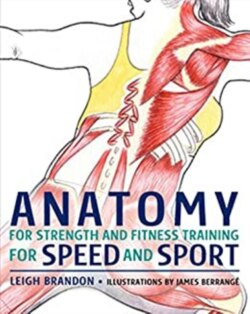Читать книгу Anatomy for Strength and Fitness Training for Speed and Sport - Leigh Brandon - Страница 10
На сайте Литреса книга снята с продажи.
ОглавлениеJOINT MOVEMENTS
Knowing and understanding movement (which joint is moving, how it moves) is essential to being able to analyze a complex exercise. This book has done the job of joint identification for you, and understanding this section will help to improve your exercise analysis.
Types of joints
Some joints are fixed or semi-fixed, allowing little or no movement. For instance, the bones of the skull join together in structures known as sutures to form fixed joints; but when the spine joins the pelvis, the sacroiliac joint is semi-fixed and allows minimal movement. (‘sacro’ from sacrum and ‘iliac’ pertaining to the ilium of the pelvis).
A third category called synovial joints are free-moving and move in different ways determined by their particular shape, size and structure.
Synovial joints are the most common joints in the body. They are categorized by a joint capsule that surrounds the articulation, the inner membrane of which secretes lubricating synovial fluid, stimulated by movement. Typical synovial joints include the shoulder, knee, hip, ankle, joints of the feet and hands and the vertebral joints.
Joint action
When performing an activity such as lifting weights or running, the combination of nerve stimulation and muscular contraction facilitates the movement that occurs at the synovial joints.
When doing a squat, for example (see page 62), the body weight rises away from the floor, because the angle of the ankle, knee and hip joints increases due to the muscles acting across the joints contracting and causing the joints to extend.
Joint movement pointers
Most joint movements have common names that apply to most major joints, but there are some movements that occur at only one specific joint.
The common joint movements occur in similar anatomical planes of motion. For example, shoulder, hip and knee flexion all occur in the sagittal plane (see page 15). This makes it logical and easier to learn about joint movements and movement analysis.
In the table below, common movements are listed first, followed by specific movements that only occur at one joint.
Strictly speaking, it is incorrect to name only the movement and a limb or body part. For example, ‘leg extension’ does not clarify whether this happens at the knee, hip or ankle. Get into the habit of always pairing the movement with the joint that is moved. For example, elbow flexion, hip extension, spinal rotation and scapular elevation. (Possibly the only exception to this is when referring to trunk movements, when all the joints of the spine combine to create movement of the whole body part).
Movements generally occur in pairs. For every movement, there must be a return movement to the starting position. Typical pairs are flexion and extension, abduction and adduction, internal rotation and external rotation, protraction and retraction, elevation and depression.
Remember, all movements are named as if the person were standing in the anatomical position (see page 15). So ‘elbow flexion’ is the same regardless of whether you are standing, seated or lying.
Major joint movements
